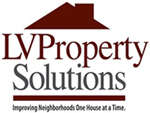As interest rates rise, hybrid mortgages may be a good option..
You can count on interest rates going higher because: – The Federal Reserve intends to continue reducing its monthly purchases of mortgage bonds and Treasury securities, which will have the side effect of raising rates. – The national economy finally appears to be picking up steam, based on the latest quarterly data. Higher growth rates in turn will increase demand for available credit and probably nudge rates higher. – New federal regulations for mortgage lenders aimed at avoiding another bust take effect Jan. 10. Not only will loan officers and underwriters scrutinize applicants’ income, debt ratios and credit extra carefully, they’ll probably charge more for borrowers whom they see as a higher risk. Some mortgage economists predict that conventional 30-year, fixed-rate loans could go to 5.5% before year-end.
The case for sticking with a traditional fixed-rate mortgage is straightforward. Though 30-year rates are more than a percentage point higher this month than they were a year earlier, they are still not far off multi-decade lows. Bruce A. Calabrese, president of Equitable Mortgage Corp. in Columbus, Ohio, is adamant: “My advice for home buyers” in the new year, he said, “is to lock [early] into a 30-year fixed” while rates are still under 5%. “Take a 30-year fixed at 4.75% and be happy” because that’s still far below average rates over the last several decades. Paul Skeens, president of Colonial Mortgage Corp in Waldorf, Md., agreed. “If fixed [rates] are under 5.5% and you are going to live in your home for five years or more, they are still a great deal,” he said. “I’m very partial to fixed rates since I remember when anything under 7% was a great deal.” To illustrate Skeens’ and Calabrese’s historical point, consider these average annual 30-year fixed rates: In 1974, they averaged 9.19% nationwide, according to mortgage investor Freddie Mac. By 1984, they were at 13.88%. In 1994, fixed rates averaged 8.38%; and in 2004, 5.84%. But what if you say: I don’t care about what rates were in previous decades. I’m more concerned about being able to afford today’s housing prices on today’s income and household expenses.
A check of Bankrate.com‘s online rate monitor in late December found five-year hybrids averaging around 3.4% nationwide, seven-year hybrids at 3.81% and 10-year hybrids at 4.16%. Thirty-year fixed-rate mortgages averaged 4.63%.
Ted Rood, senior mortgage consultant with Wintrust Mortgage in St. Louis, said he’s already seeing a shift in demand toward five- and seven-year hybrids. He just closed a seven-year hybrid at 3.5% on a house in Wyoming for a borrower who fully understood the risk that he could face higher rates at the conversion point in late 2020.
Bottom line for you if you’re in the market: Check out all the options on the menu. If you are comfortable with the potential risks, and the monthly savings advantages of a hybrid are substantial, go for it. Source: [NO B.S. Real Estate News] by Jeff Adams, Jan. 16th, 2014 |
